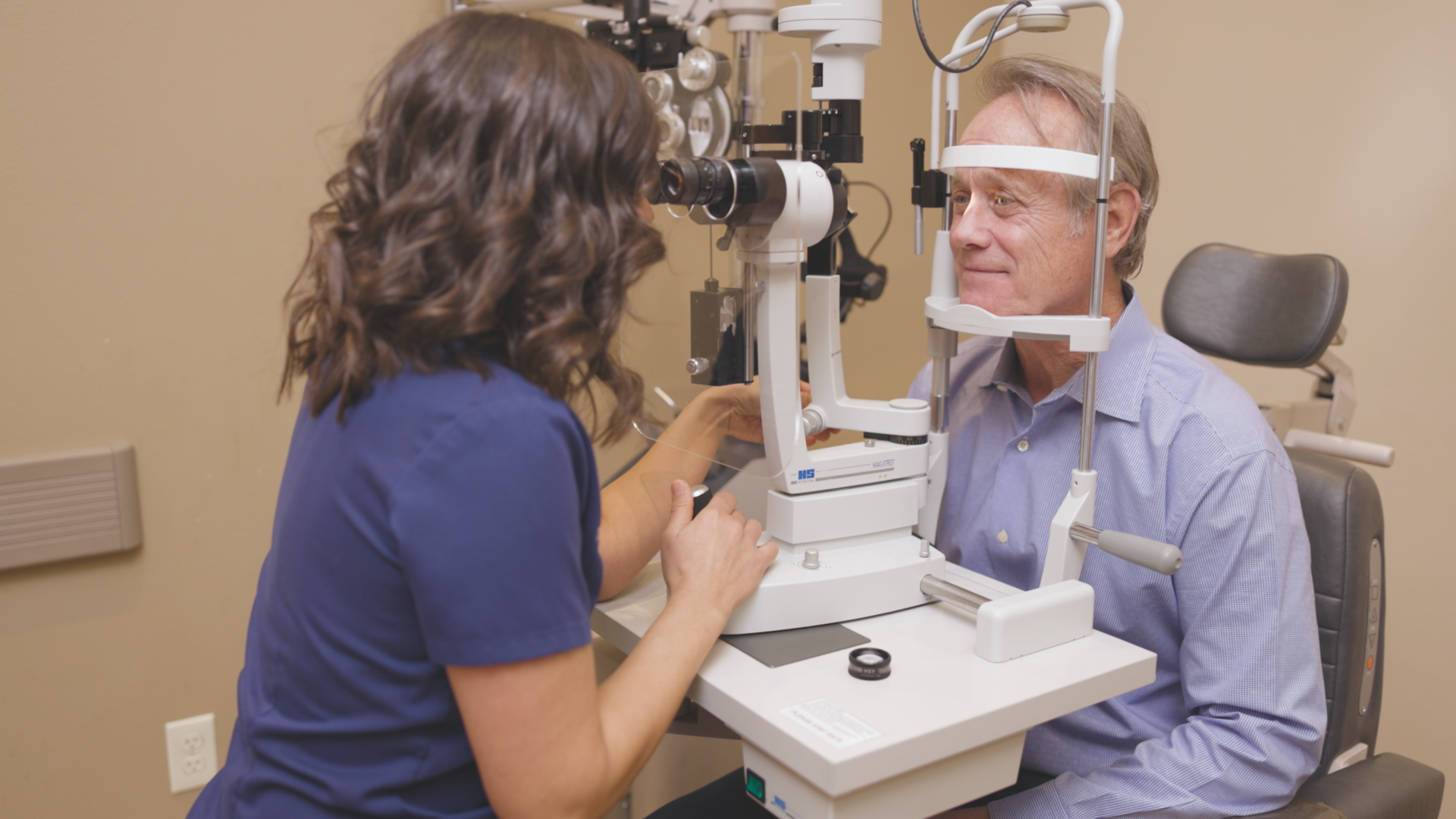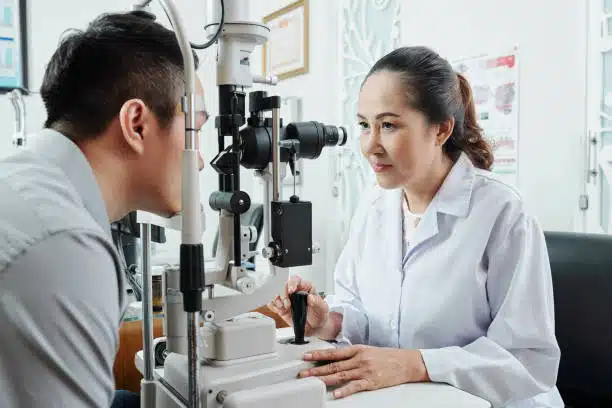The Importance of Regular Examinations with an Eye Doctor Optometrist
The Importance of Regular Examinations with an Eye Doctor Optometrist
Blog Article
Checking Out the Most Current Technological Advancements in Optometry and What They Mean for Eye Doctors
From the accuracy of Optical Coherence Tomography to the nuanced understandings supplied by AI-driven analysis devices, these technologies are setting new standards in individual evaluation and therapy. As these developments penetrate the method, optometrists are encountered with the challenge of accepting these devices to improve person results.
Technologies in Diagnostic Tools
Progressing the field of optometry, advancements in diagnostic devices have actually transformed the way eye care experts evaluate and diagnose aesthetic impairments and eye conditions. The past years has experienced substantial technical improvements, allowing more precise and extensive analyses.
One more key innovation is the introduction of advanced corneal topography systems, which map the surface area curvature of the cornea with accuracy. These tools are particularly helpful for suitable contact lenses and diagnosing corneal disorders. Digital retinal imaging has actually changed traditional ophthalmoscopy, providing detailed, panoramic views of the retina that facilitate complete visual exams.
The advancement of wavefront aberrometry has actually likewise been critical, making it possible for the evaluation of refractive errors with unparalleled precision (Eye Doctor). This modern technology aids in personalizing corrective lenses and enhancing medical outcomes for refractive surgeries. Jointly, these analysis innovations equip eye doctors to provide premium individual care, ensuring early intervention and tailored therapy approaches, eventually boosting aesthetic health and wellness end results
AI in Person Monitoring
Building on the foundation of sophisticated analysis tools, the consolidation of man-made intelligence (AI) in individual administration stands for a transformative leap for optometry. AI systems are progressively used to improve effectiveness, accuracy, and personalization in person treatment.
In addition, AI-driven systems help with streamlined patient interactions and administrative processes. Automated organizing, online examinations, and personalized follow-up plans not only enhance person complete satisfaction yet additionally enhance time monitoring for practitioners. These systems can triage clients based on the necessity of their problems, ensuring that those in vital requirement get punctual focus.
Additionally, AI boosts decision-making by giving optometrists with evidence-based suggestions and treatment paths. By incorporating data from digital health and wellness records, AI devices provide understandings that inform medical choices, lowering the threat of mistakes and boosting patient end results. As AI remains to advance, its duty in person administration will likely broaden, improving the landscape of optometric treatment.
Breakthroughs in Retinal Imaging
In the world of optometry, retinal imaging has actually observed amazing technical improvements that are improving diagnostic abilities and client treatment. Developments such as Optical Coherence Tomography (OCT) and fundus digital photography have changed exactly how optometrists assess the retina and picture. OCT, specifically, provides high-resolution, cross-sectional pictures of the retina, allowing for the in-depth evaluation of its layers. This ability is very useful for early detection and management of conditions like glaucoma, diabetic retinopathy, and age-related macular degeneration.
Enhanced imaging techniques like OCT angiography are additional refining diagnostic accuracy. This non-invasive strategy maps blood flow in the retina, providing vital insights into vascular health and wellness without the requirement for dye shots. In addition, adaptive optics technology is being incorporated into retinal imaging systems to correct ocular aberrations, providing unprecedented image clarity. Such innovations promote the identification of min retinal modifications that can signify illness progression.
In addition, advancements in expert system are increasing retinal imaging by making it possible for automatic evaluation of big datasets. These systems assist eye doctors in determining patterns a sign of pathology, consequently enhancing diagnostic accuracy and performance. Jointly, these developments are transforming retinal imaging into a keystone of contemporary eye care, enhancing end results and increasing therapeutic opportunities.
Teleoptometry's Growing Duty
Teleoptometry is significantly coming to be a crucial component of eye treatment, driven by innovations in electronic interaction and analysis devices. As optometry accepts digital makeover, teleoptometry assists in remote assessments, allowing eye doctors to expand their services past typical limits. This is especially valuable in underserved and country locations where access to specialized eye treatment is typically minimal. By leveraging high-resolution video clip conferencing and progressed retinal imaging, eye doctors can carry out comprehensive eye tests from afar, ensuring prompt diagnosis and therapy.
The integration of expert system (AI) additional boosts teleoptometry, making it possible for the evaluation of aesthetic data and assisting in the discovery Visit Your URL of eye conditions such as glaucoma and diabetic retinopathy. AI-powered formulas can rapidly interpret complicated imaging information, supplying optometrists with useful understandings that strengthen professional decision-making.
Additionally, teleoptometry supports continuity of treatment via seamless integration with digital health documents (EHRs), allowing eye doctors to keep comprehensive client histories. This guarantees that clients obtain constant and tailored treatment even when seeking advice from various practitioners.
In spite of these advantages, challenges continue to be, consisting of making sure data safety and handling client expectations. Nonetheless, teleoptometry stands for a considerable stride in the direction of even more accessible, efficient, and patient-centered eye care. As technology evolves, its duty is poised to increase additionally.

Future Fads in Eye Care
A myriad of ingenious trends is readied to improve the future of eye care, driven by technical improvements and the evolving demands of clients. One substantial pattern is the integration of fabricated knowledge (AI) in diagnostics, which guarantees to boost the precision and performance of eye assessments. AI algorithms can analyze huge amounts of information from retinal photos, potentially spotting problems like diabetic retinopathy and glaucoma earlier than typical approaches.
Moreover, personalized medication is obtaining grip in optometry, with genetic testing informing tailored treatment plans. This Read Full Report approach intends to maximize patient outcomes by tailoring interventions to specific hereditary profiles. Wearable modern technology, such as clever call lenses, is also on the perspective, offering real-time monitoring of intraocular pressure or glucose levels, therefore supplying continuous understandings into eye and systemic wellness.
The fostering of augmented fact (AR) and digital fact (VIRTUAL REALITY) in training and client education and learning is one more arising pattern. These modern technologies provide immersive experiences that can improve understanding and abilities both for eye doctors and patients. As these trends advance, optometrists should remain abreast of technical developments to provide advanced care, guaranteeing better client end results and fulfillment in the vibrant landscape of eye treatment.
Conclusion

Jointly, these diagnostic innovations empower eye doctors to deliver superior patient care, making sure early intervention and customized treatment strategies, eventually enhancing visual health and wellness outcomes.

As these innovations continue to advance, optometrists need to adapt and include them right into practice, inevitably optimizing workflow performance and elevating the requirement of eye treatment provided to clients.
Report this page